Pergamonmuseum. Das Panorama (Pergamon Museum. The Panorama), Berlin
A way to engage with Berlin’s famous Pergamon Altar during the extended closure of the Pergamon Museum, Yadegar Asisi’s panoramic interpretation reimagines and reinterprets this high point in Hellenic art.
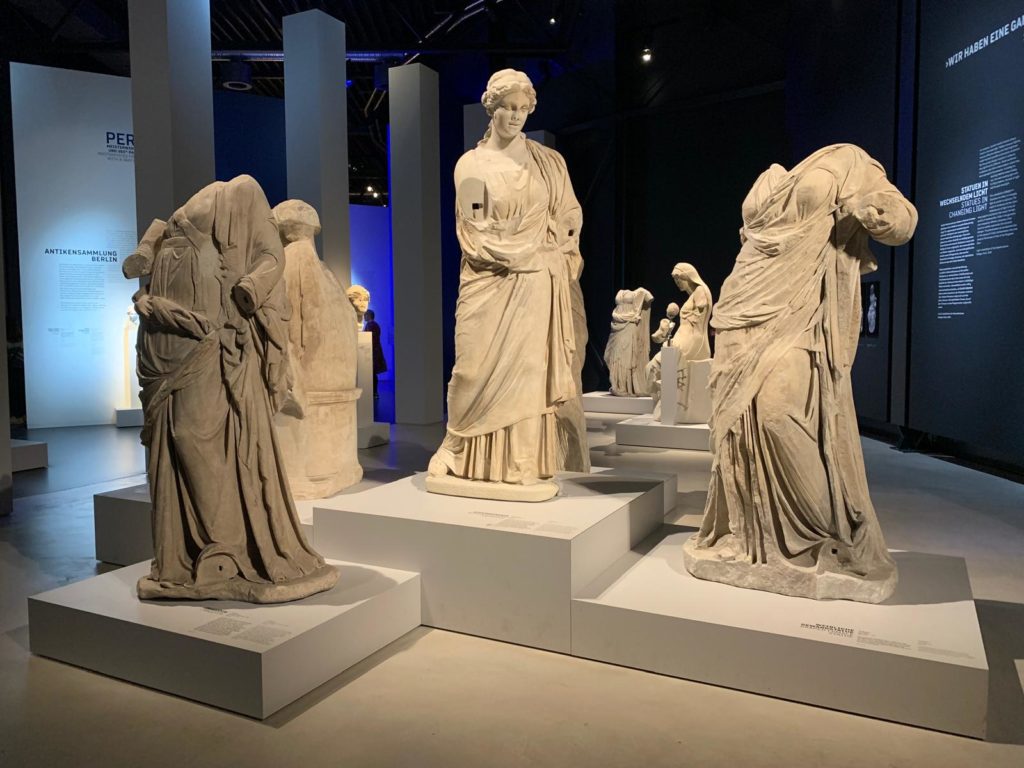
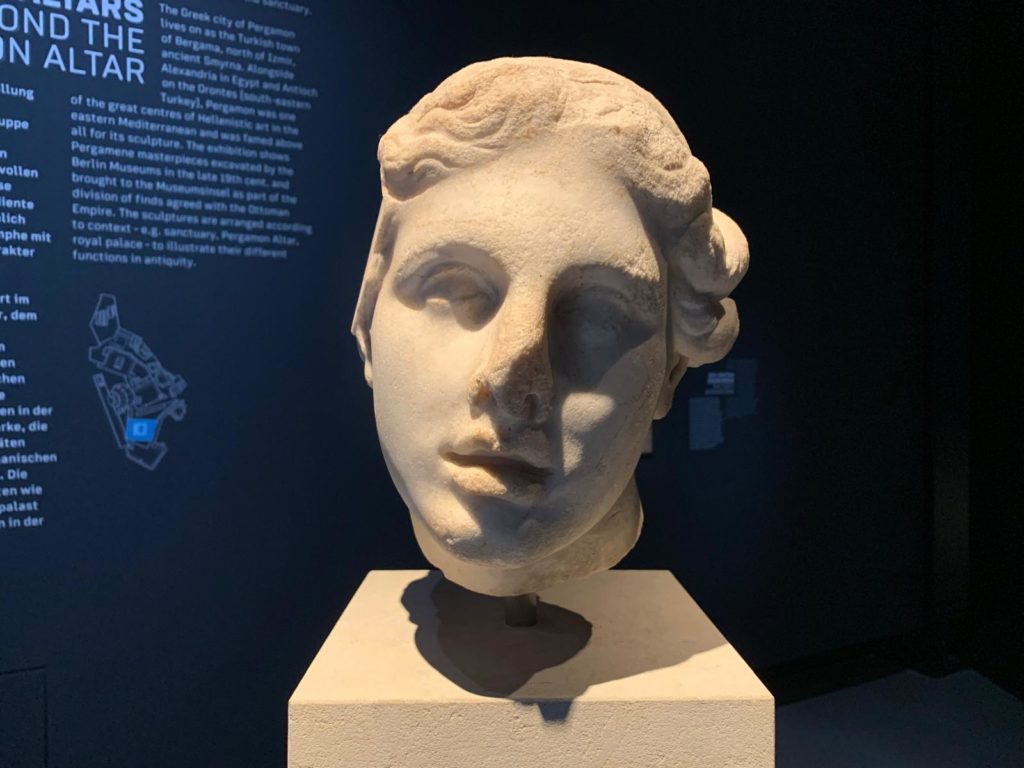
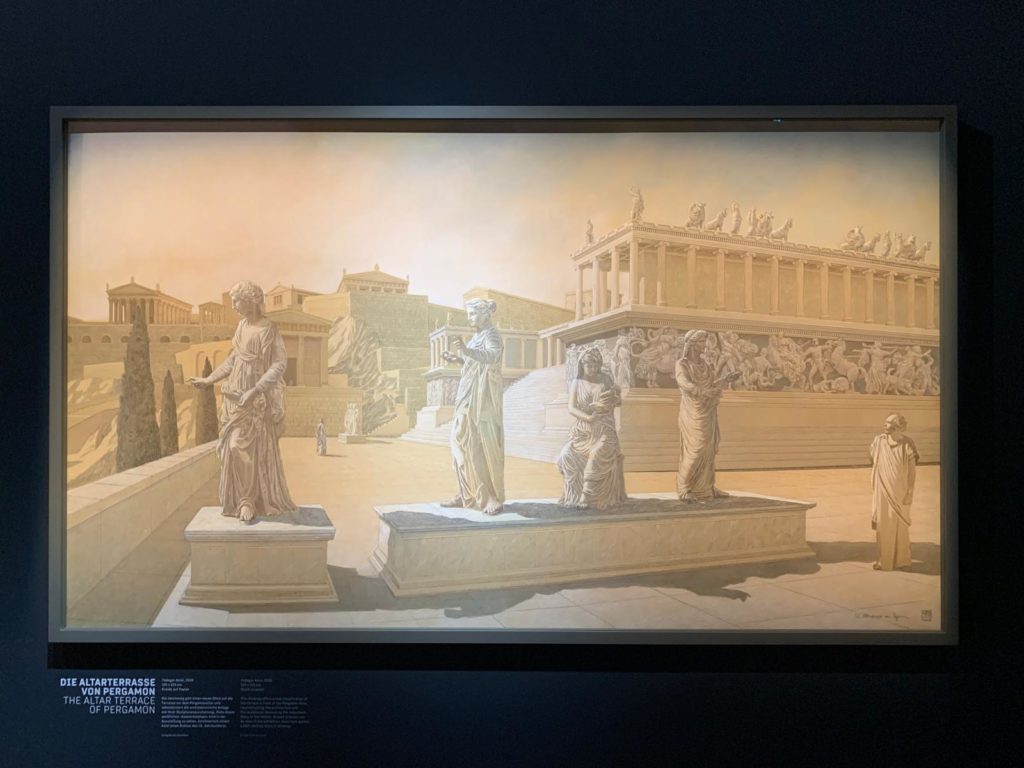
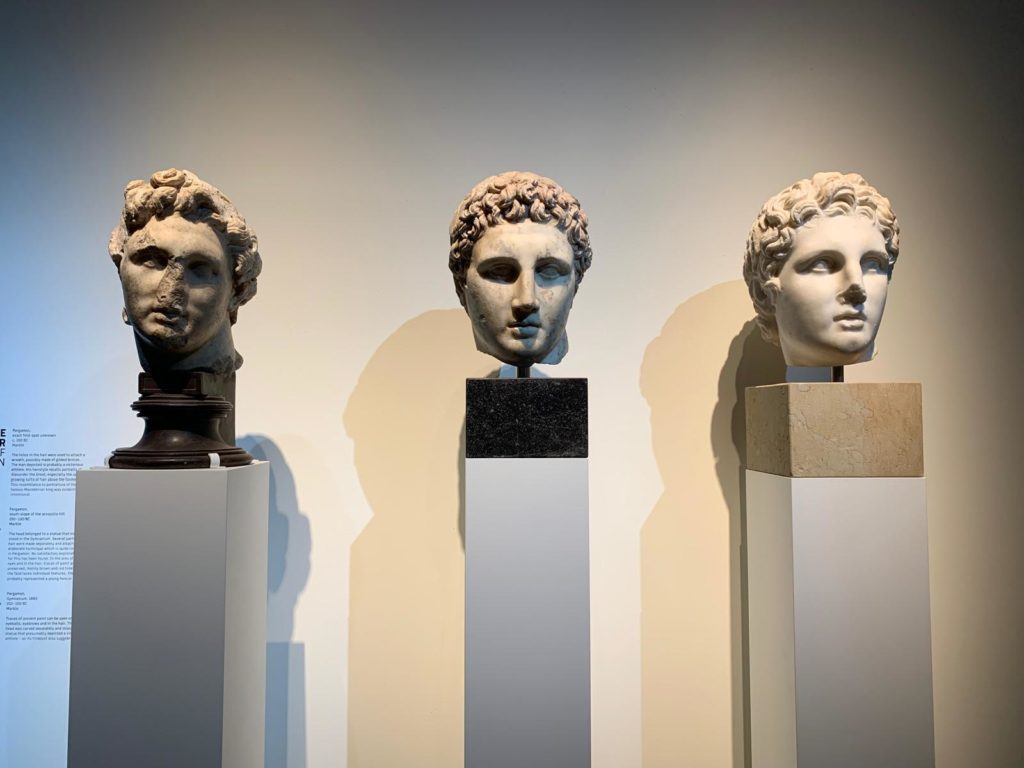
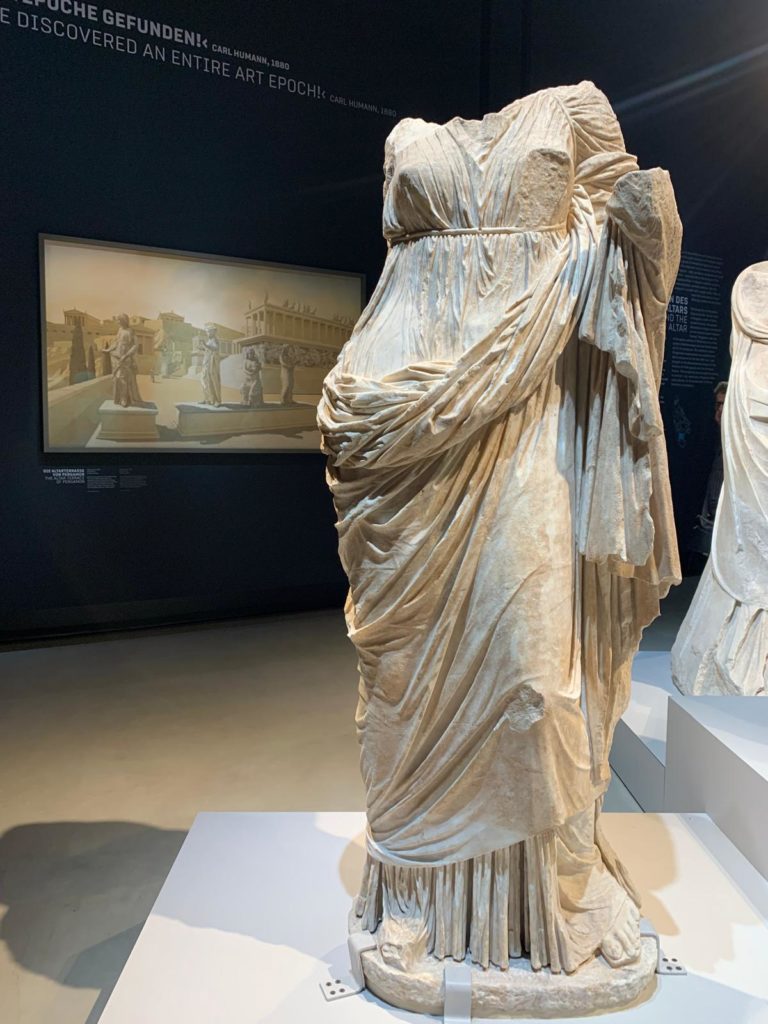
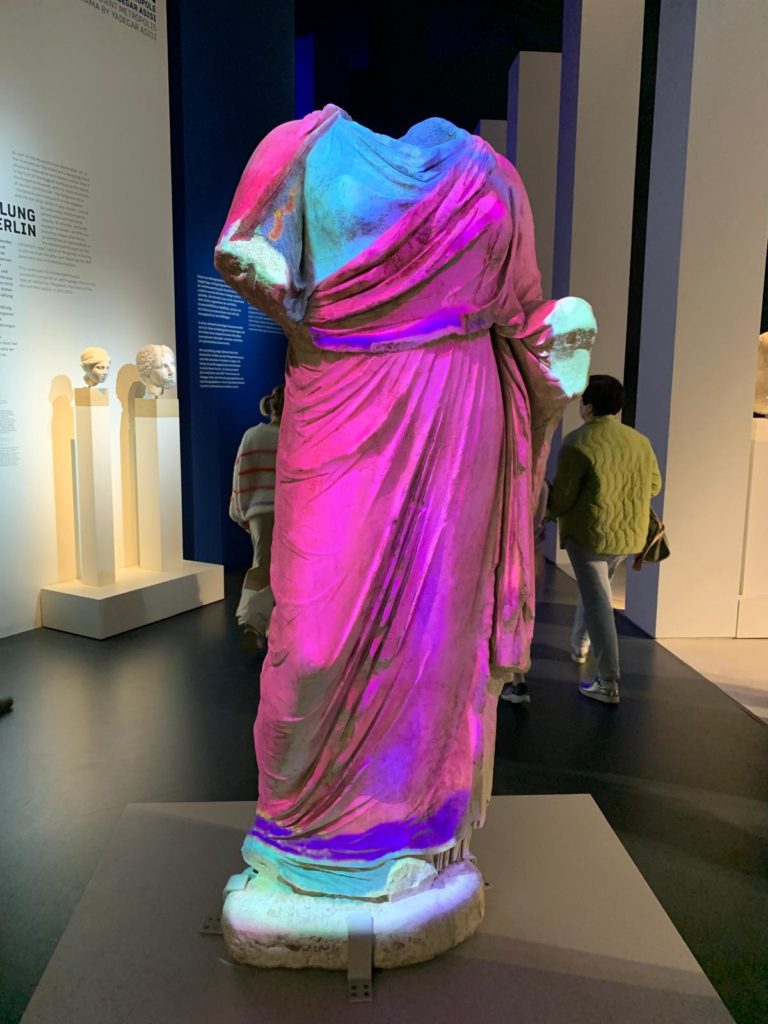
The Pergamon Museum and German History
I feel like there is quite a neat summary of German history contained within the history of the Pergamon Museum. The museum itself is currently closed (we will get onto that shortly), and yet in its fortunes over the years we can track the fortunes of the wider society of which it is a product. Let me explain in a little more detail what I mean.
Germany only became Germany in 1871, when various states led by Prussia unified. More properly, it was the German Empire until 1918. Having had a late start to nationhood, the German Empire (the ‘Empire’ is a clue) was keen to catch up and prove its greatness. This meant a few things, including building a navy, grabbing some colonial territories, and focusing on cultural institutions. We are most interested today in this last point.
German engineer Carl Humann went to Pergamon (modern Bergama in Turkey) for the first time in 1864-65 to undertake geographic investigations. He sought help to remove the remains of the Pergamon altar, which were then under threat from stone quarrying and locals burning the stone for lime. However, looking at it from another angle, it also fits into a wider trend of Germany removing architectural archaeological remains to museums. A cynic would say that the earlier colonial powers had removed most portable antiquities already so it was the big things that remained.
Once in Germany, the next issue was a fitting home to show off this large-scale treasure. The first couple of Berlin homes for the Pergamon Altar weren’t big enough, so a bespoke building was started in 1910. It only finished in 1930, interrupted by WWI and subsequent hyper-inflation. The results were good enough that a banquet in front of the Altar was part of Germany’s bid to win the 1936 Olympics.
The authorities did their best to protect the Pergamon Altar and other antiquities during WWII, but the collection ended up being dispersed in chaos. The Red Army took part of it, and only returned it in the late 1950s. West Germany ended up with some of the sculpted heads from Pergamon (and displayed them at Schloss Charlottenburg). Some parts of the collection are still not back in Germany.
Post-Reunification, a major restoration programme began, redressing issues with rust from previous iron mountings. And finally, the reason we are here talking about the Pergamon Museum is paradoxically because it is closed. The museum is underdoing major renovations as part of a master plan for Berlin’s Museumsinsel (Museum Island). Estimates vary on when it will reopen based on which source you look at. Perhaps 2027?
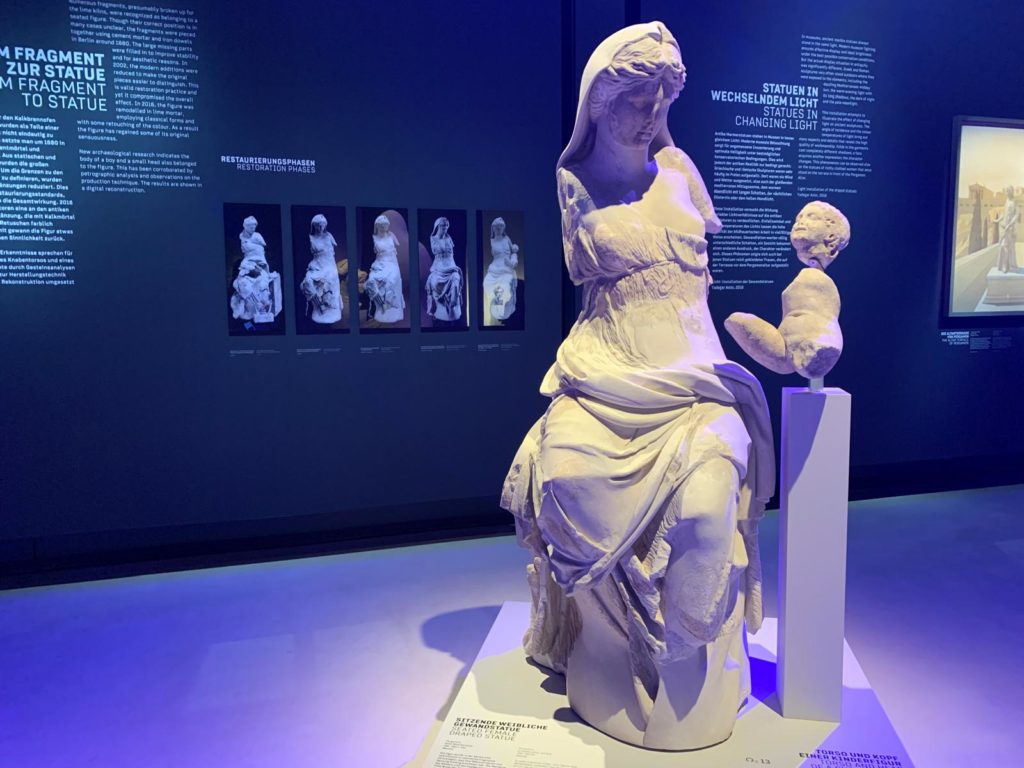
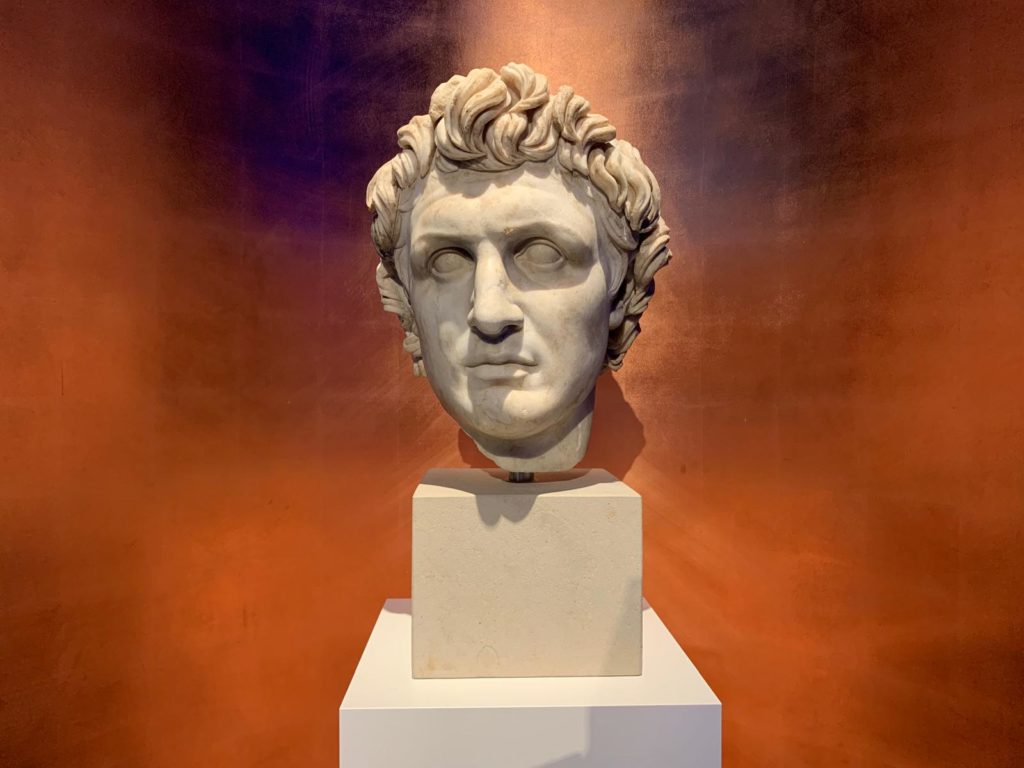
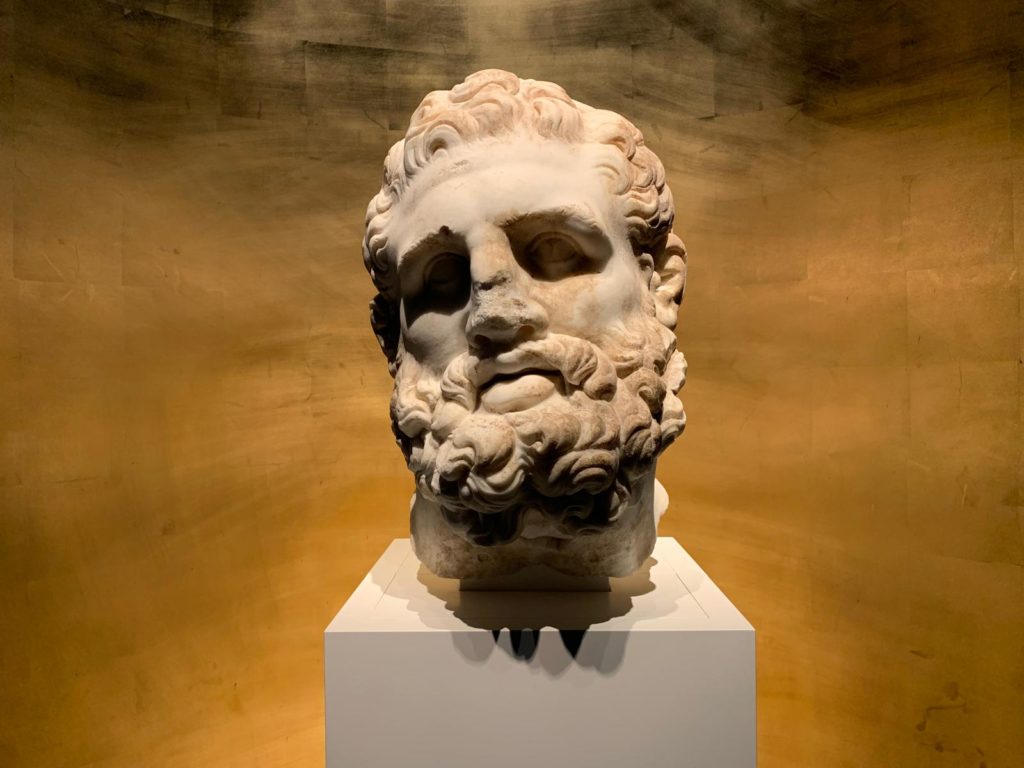
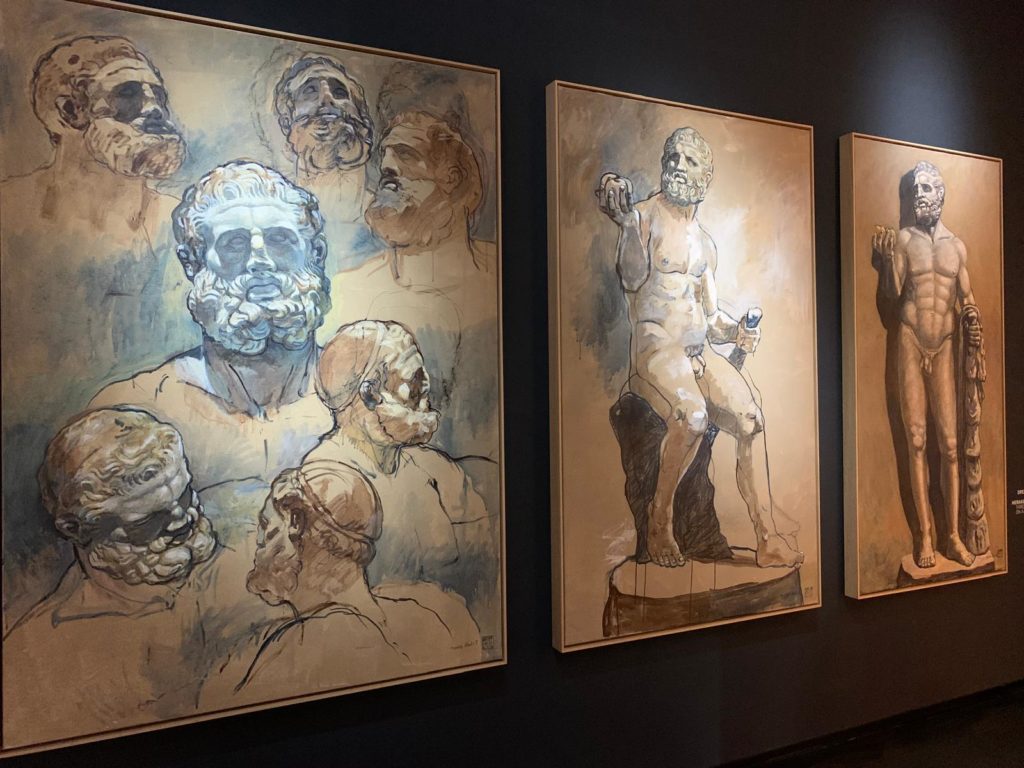
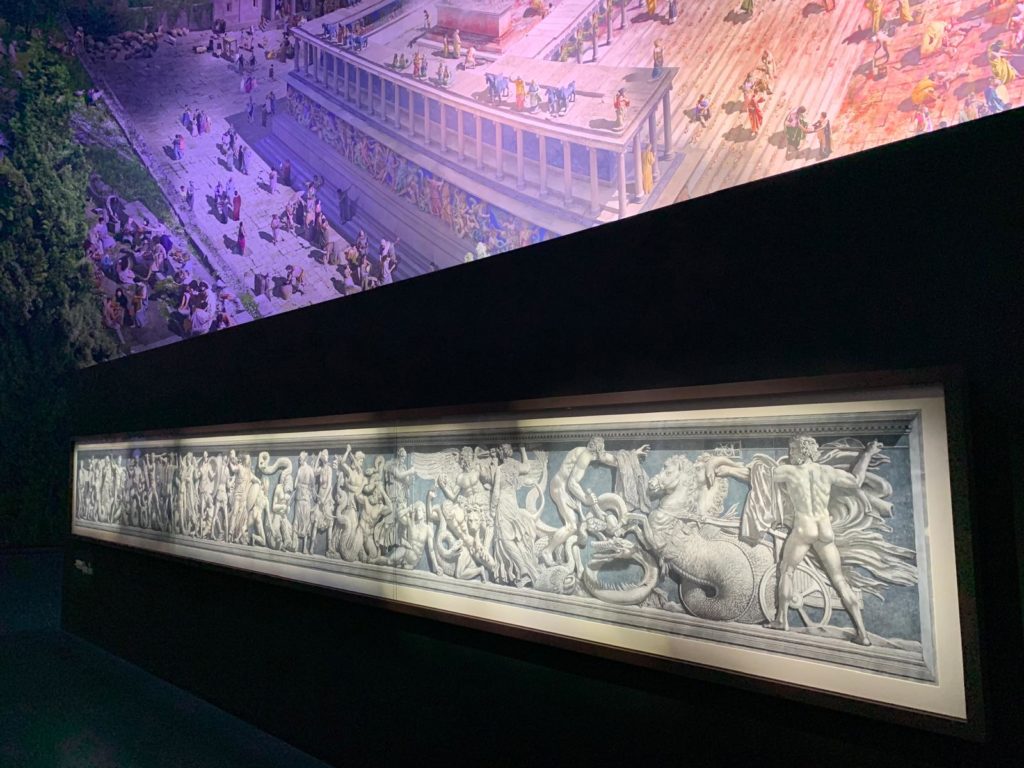
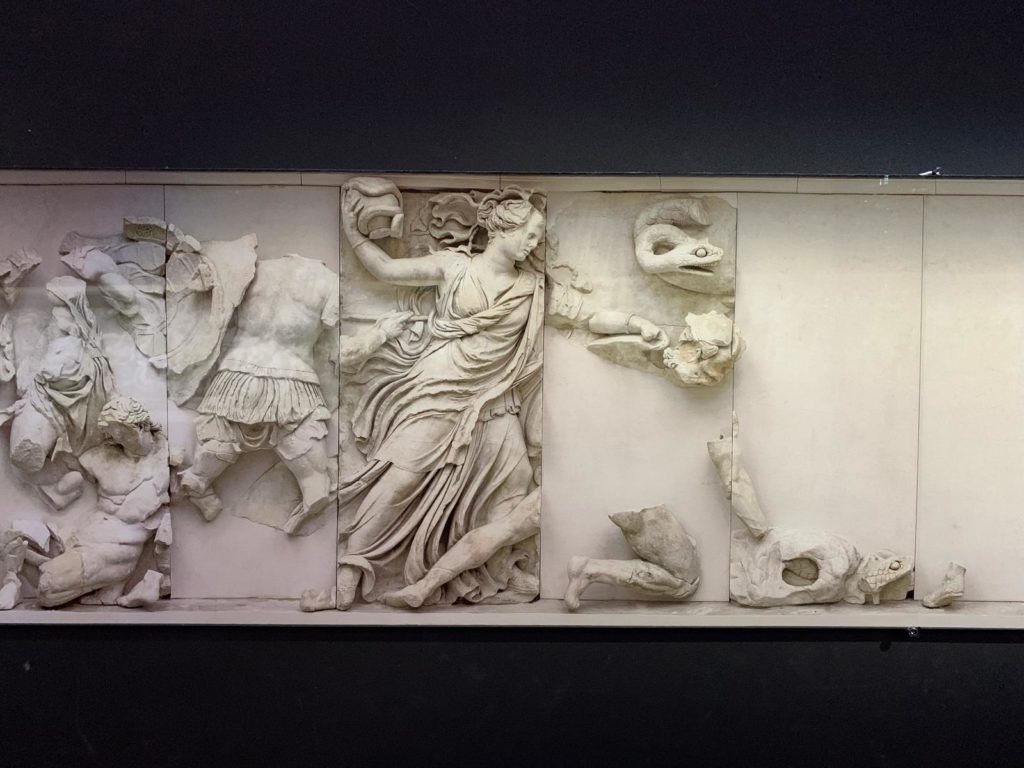
The Pergamon Museum Panorama
So why are we talking about a museum that’s closed? Because the Pergamon Museum have come up with a good way to stay in the public consciousness and share their treasures during this closure. And it involves an approach we have seen once before.
Regular Salterton Arts Review readers might remember my visit to Panometer Dresden in 2023. A portmanteau word combining ‘panorama’ and ‘gasometer’, the Panometer is one of several around Germany. They are the work of Yadegar Asisi, an artist who creates large-scale immersive experiences and accompanying exhibitions. There’s actually another one in Berlin, focusing on the Berlin Wall.
Asisi collaborated with the Pergamon Museum once before, with an exhibition between 2011-2012 transporting visitors to historic Pergamon. This panorama has been reworked for the current display, in a purpose-built structure opposite the Bode Museum. Reworking his intricate scenes is a common practice for Asisi: as techniques (and presumably ideas) develop he has revisited other panoramas and reshot or added details. And as with Panometer Dresden, the Pergamon Museum panorama picks a particular moment rather than relaying an imprecise view of the past. In this case Asisi takes us to 129CE – Pergamon in the Roman period during Hadrian‘s reign.
As with Panometer Dresden, visitors explore an exhibition with historic and artistic context, before entering the panorama itself. A key difference this time, however, is that the best objects associated with the Pergamon Museum are on display. Well one is on loan to the Met, but there are some great sculptures and reliefs to see. Let’s look in a bit more detail now at that visitor experience.
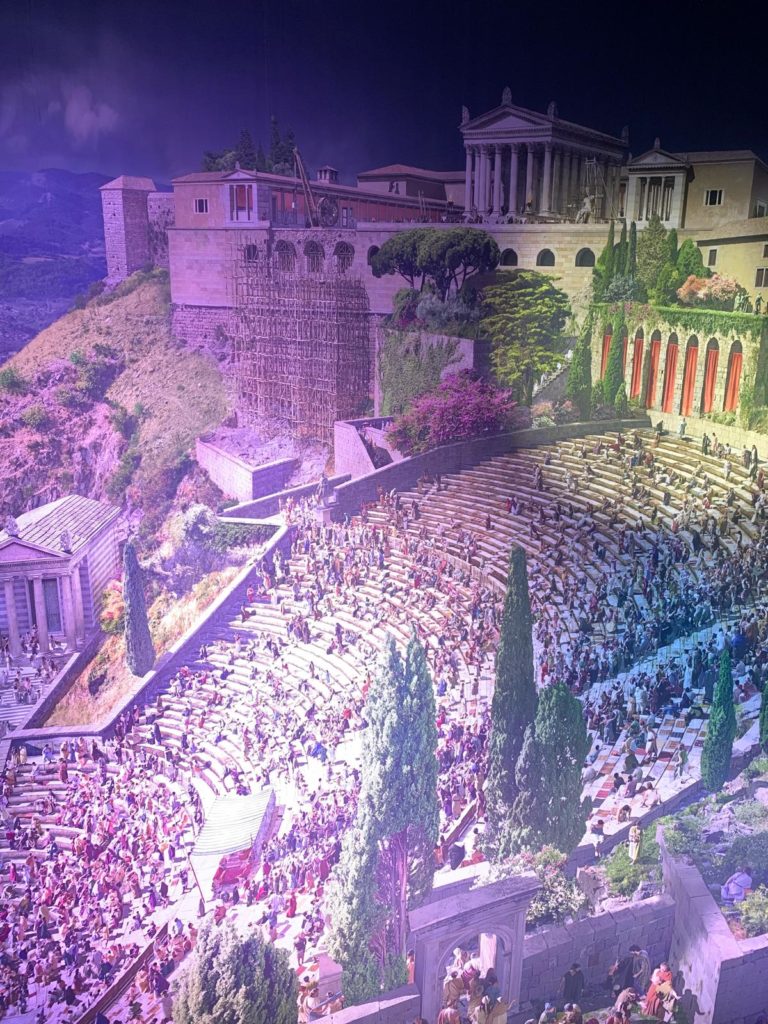
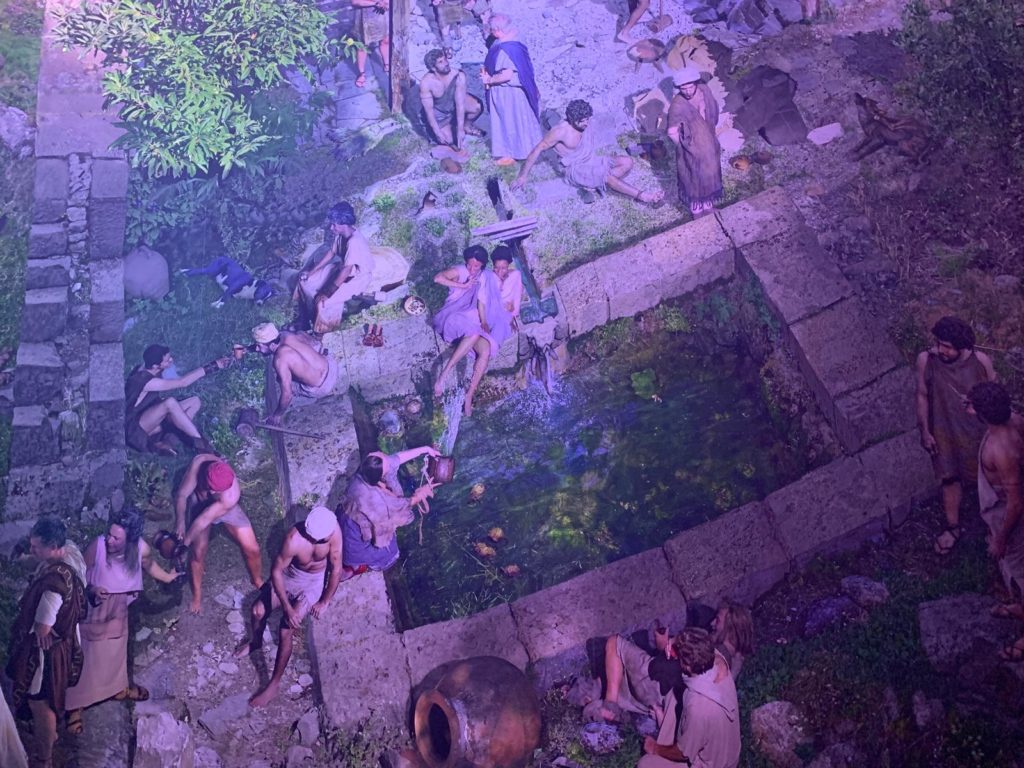
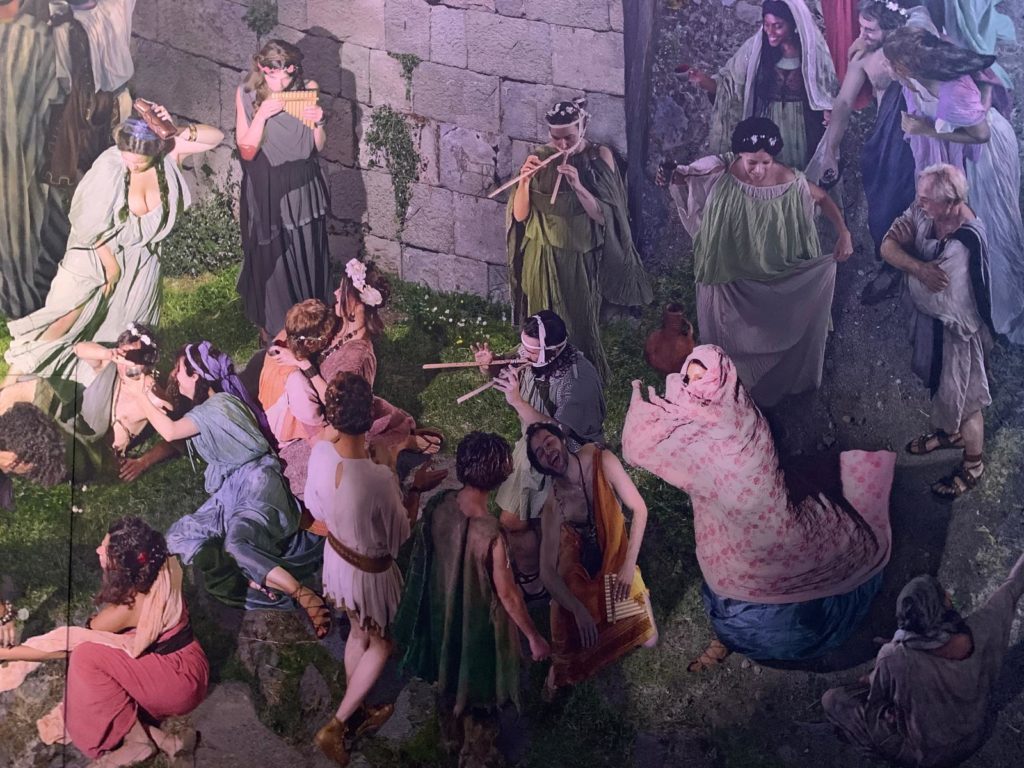
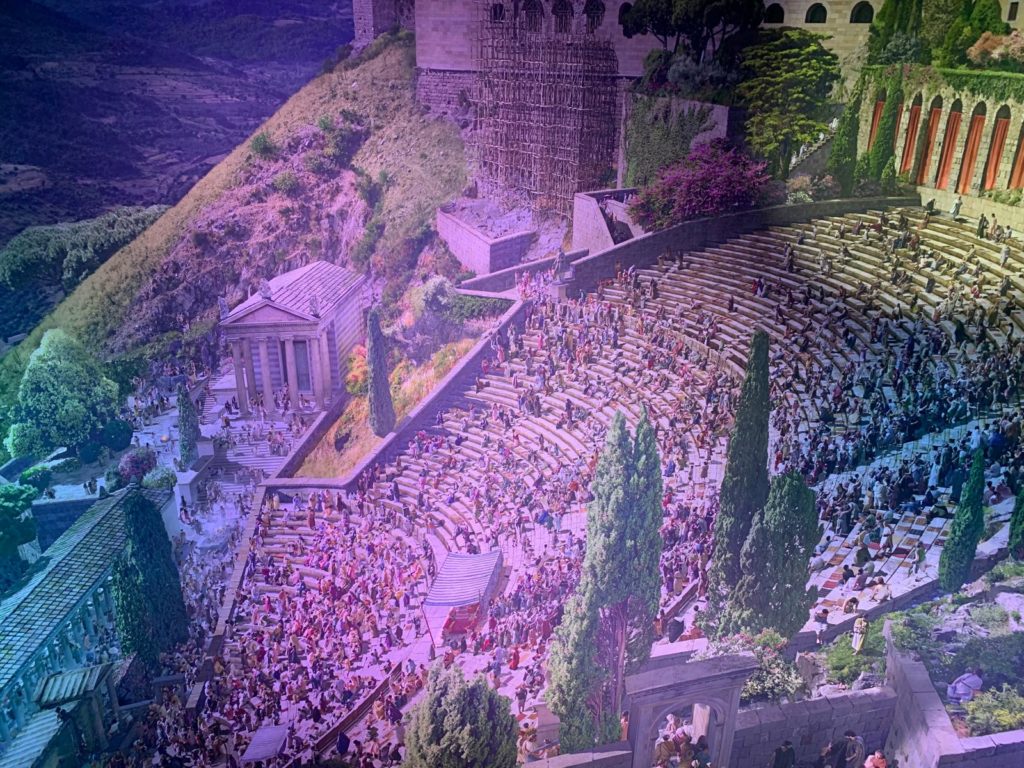
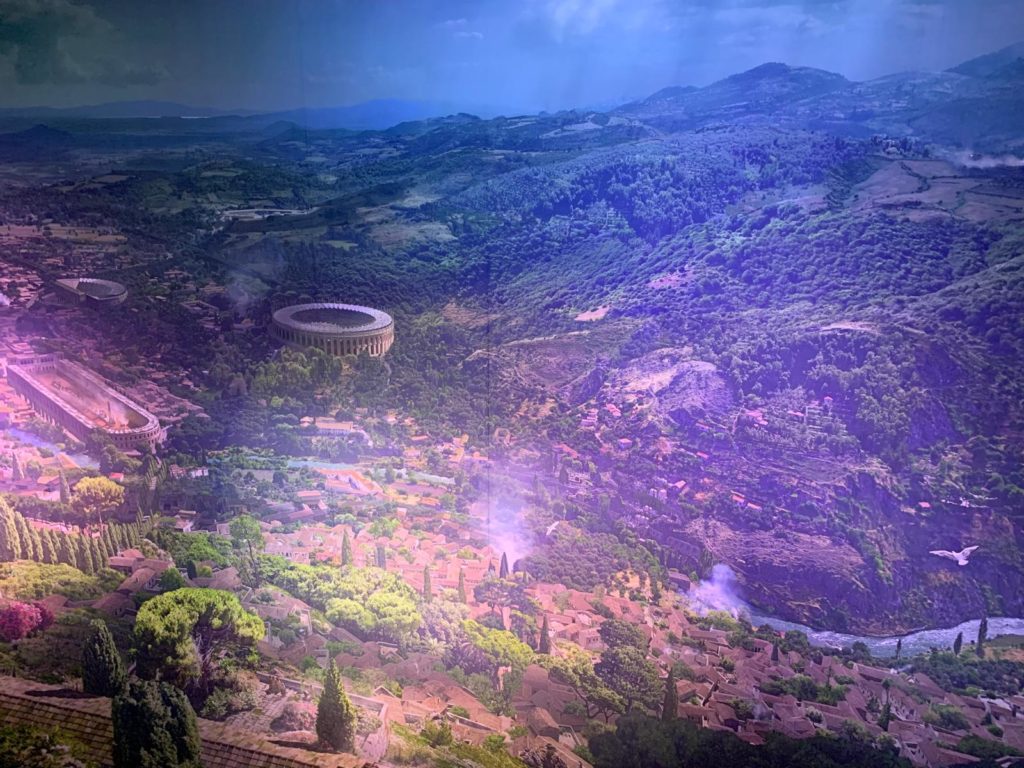
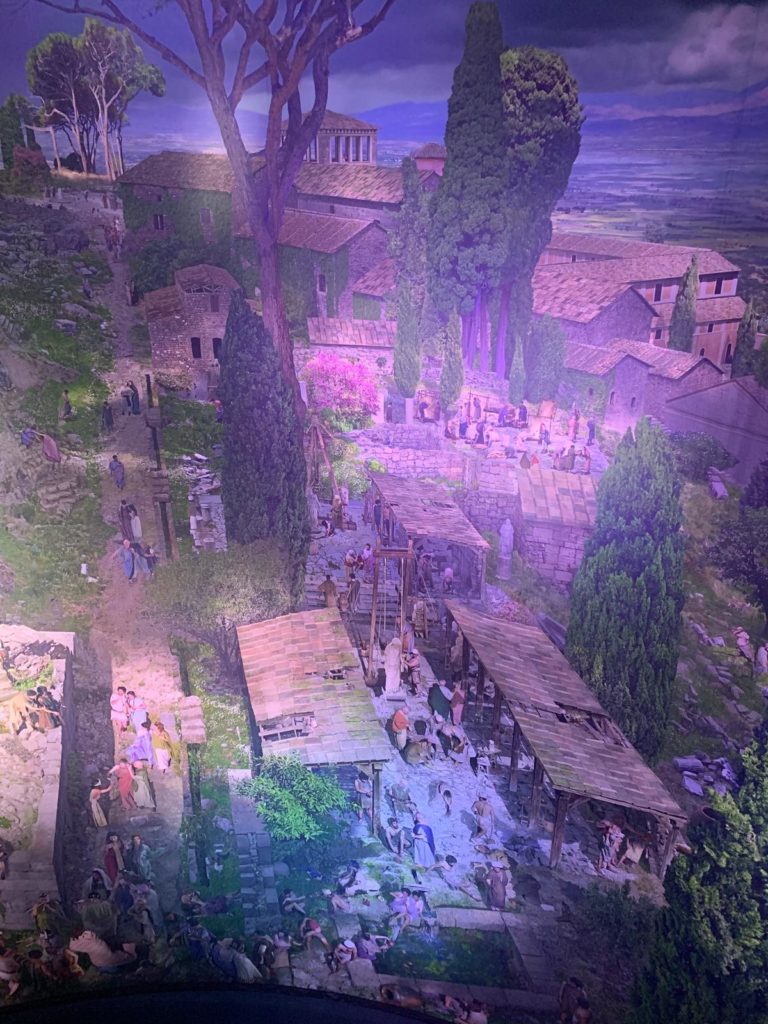
Visiting Pergamonmuseum. Das Panorama.
As I’ve already said, there are some similarities between the visitor experiences at both Asisi panoramas I’ve visited. The most important being that entering an exhibition first allows visitors to understand the context ahead of time. It also means the moment of entering the panorama itself is something of a ‘big reveal’.
Asisi has naturally collaborated with the Pergamon Museum on the content of the exhibition. Some of his handiwork is still evident, however, particularly in the flair of the exhibition design. A few of his original artworks are also on view. The exhibition continues after the panorama, but let’s focus on the scene-setting first.
The introductory section covers in a little more depth some of the topics I’ve already mentioned. There’s a little history of the Pergamon Altar and its excavation. An overview of the museums which have housed it in Berlin, and how they fared in the turbulent 20th century. The Museumsinsel master plan I mentioned. Then we get into a little more detail about the Altar and sculptures. We meet the sculptures of women which stood on the terrace. The exhibition even prepares us to see the sculptures brightly painted within the panorama: not everyone knows this is how what we now know as pure white marble figures once looked. We also learn about Asisi and his vision, including returning the sculptures to changing light conditions rather than static museum lighting.
And then it’s time to enter the panorama itself. Like the one I saw in Dresden, it consists of a large printed image in the round, with a central viewing platform. The light changes over the course of a few minutes, and a soundtrack draws your attention to different elements. You can spend as much or as little time as you would like taking in the details. Information panels explain what you’re seeing in certain key areas, including at the Altar and in a street of artisans’ workshops.
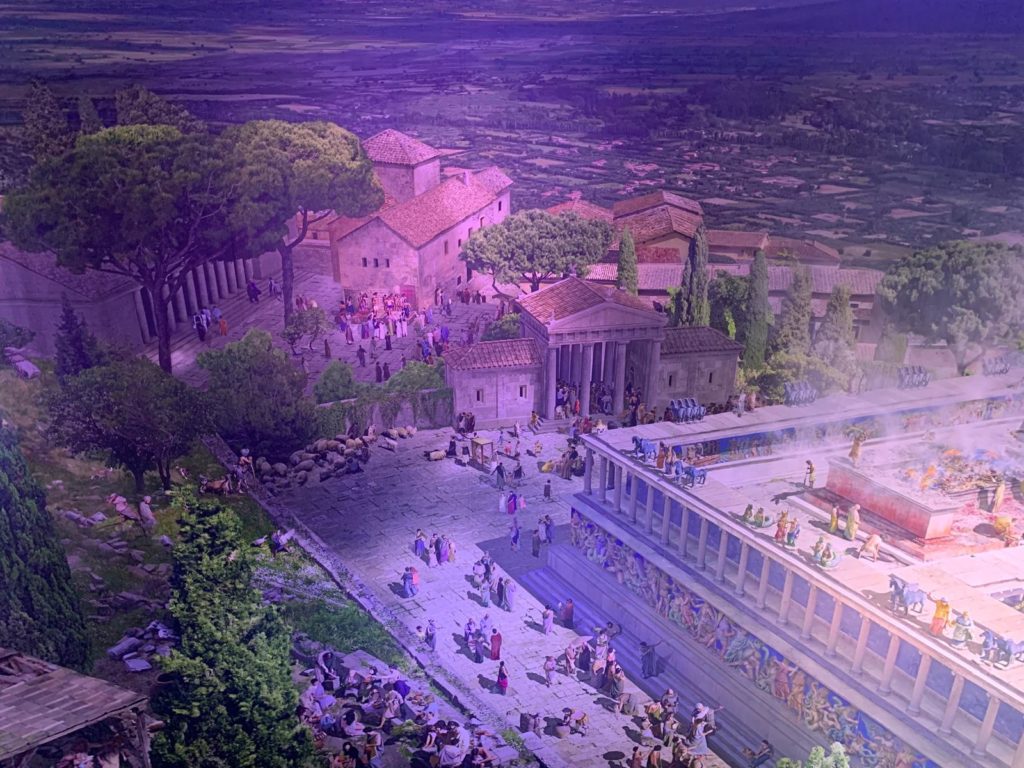

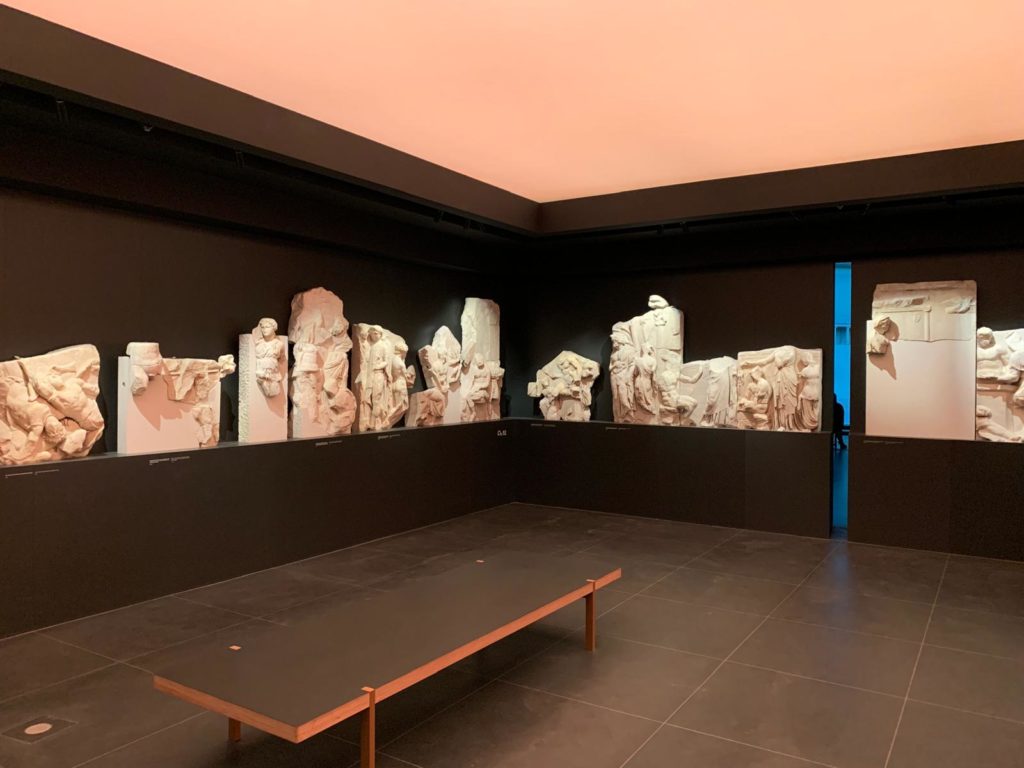
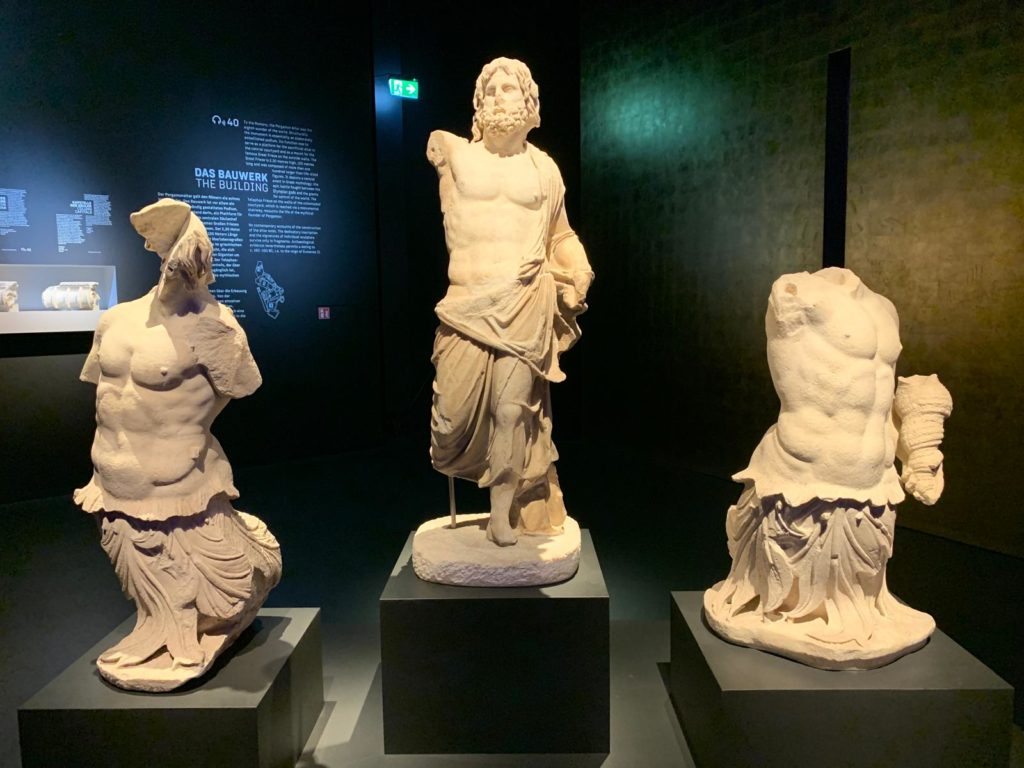
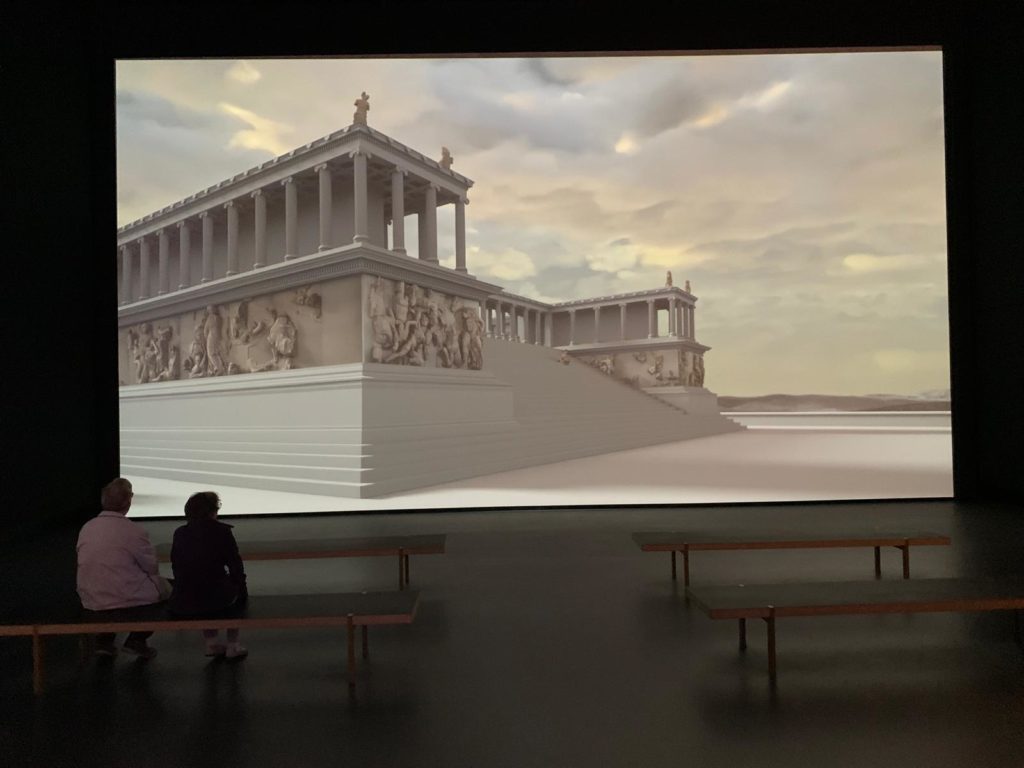
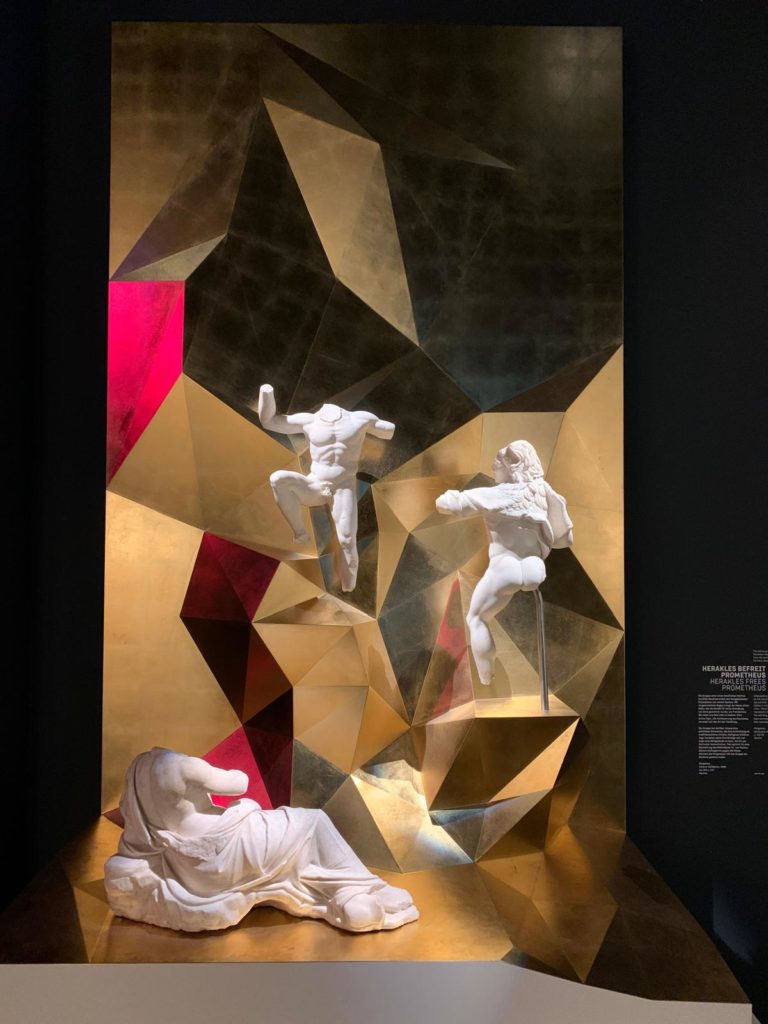
Pergamon Museum Panorama: Final Thoughts
I found the panorama engaging, if perhaps a little less so than the scene I saw in Dresden. I think this is partly that, in order to fit in the Acropolis at Pergamon, key scenes seem a little far away. It’s not always clear, either, where the line between research and imagination lies. The usage of the Altar itself, for instance, conflicts with some other sources I have read.
But what is certain is that it does breathe life back into the Pergamon Altar’s cool marble. Greek temples seem so serene to us today: white marble and awe-struck tourists. But if this is anything to go by, they were bloody, smoky, busy affairs. Pergamonmuseum. Das Panorama. also does a great job of re-situating the Altar within its geographical and social context. Better than the Pergamon Museum itself, I would argue: there has only ever been space to display the Altar in a truncated way there.
The second part of the exhibition after the panorama is also interesting. But unfortunately a lot of visitors seem to run out of steam around here and do not linger. Those that do will learn about the inner frieze featuring the legendary founder of Pergamon: Herakles’ son Telephus. There’s also a nice 3D video which moves us from the Pergamon Museum to ancient and modern Pergamon and back again.
I visited the Pergamon Museum many years ago, and I think this substitute is actually more memorable. It’s like a highlights reel plus an artistic interpretation that helps you really get a feel for this historic structure. Of course what you don’t get is any of the rest of the collection normally on view at the Pergamon Museum. Or the wow factor of seeing the Altar for yourself for the first time. But it’s one I would recommend to visitors to Berlin: a unique opportunity until the museum itself reopens!
Salterton Arts Review’s rating: 4/5
Trending
If you see this after your page is loaded completely, leafletJS files are missing.

